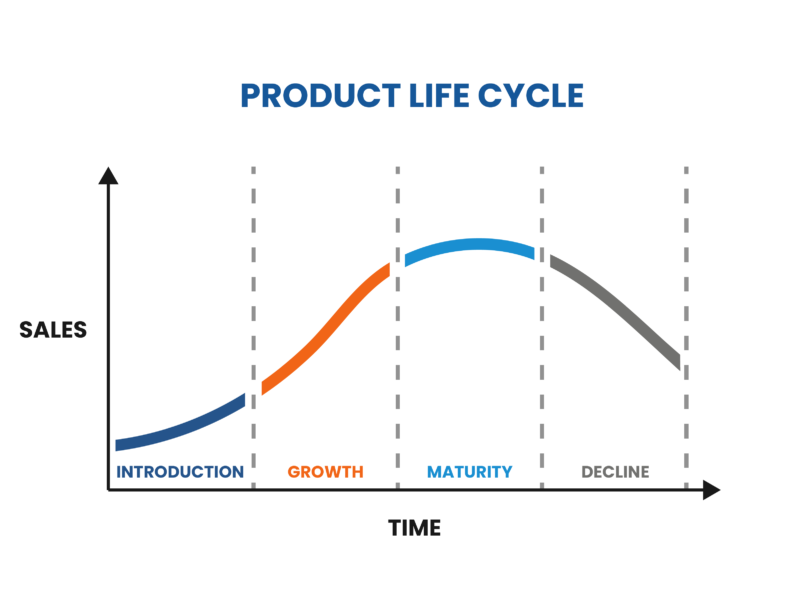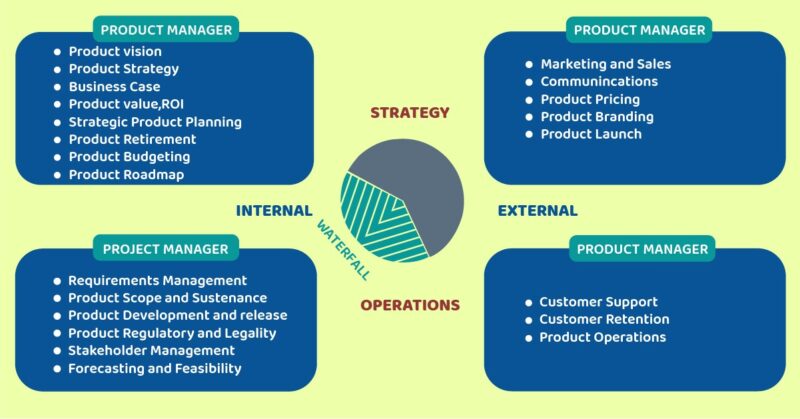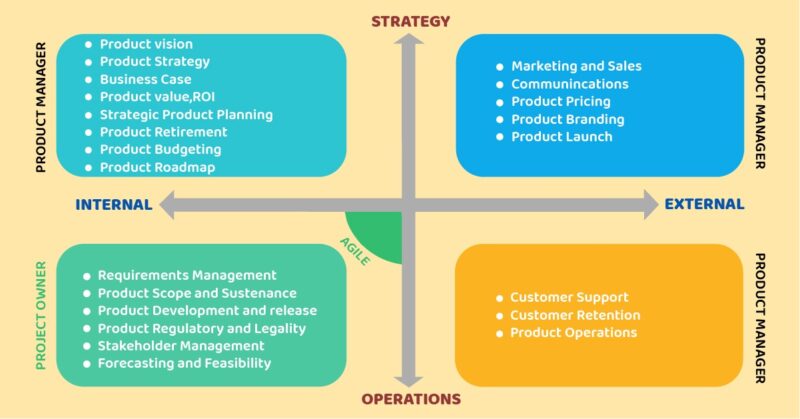CATEGORY LIST
Popular Post
-
![Agilemania Blog]()
What is a Continuous Delivery Pipeline an...
Nov 17th 2022 - BY Agilemania
-
![Agilemania Blog]()
Agile Transformation and High-Performance...
Dec 6th 2018 - BY Agilemania
-
![Agilemania Blog]()
What is AGILE? – What is SCRUM? An...
Feb 14th 2022 - BY
TAGS

- Sumeet Madan
- Sep 30th 2021
Straightforwardly if I have to explain the Product Management, then I would say, "The activities performed throughout the Product Lifecycle is the Product Management." And the Product Manager is accountable for those activities.
Let's dive into understanding a few roles that have created a few confusions in Agile Product Management.
Who is a Product Manager, Product Owner, Project Manager, and Business Analyst?
To understand these roles, we first need to understand Product Management, and for that, we may need to understand the Product Life cycle. So let's start with the Product Life Cycle first.
What are the Product and its lifecycle? The Scrum Guide, November 2020
"A product is a vehicle to deliver value. It has a clear boundary, known stakeholders, well-defined users, or customers. A product could be a service, a physical product, or something more abstract." ? merriam-webster.com 1) Something produced
2) Something (such as a service) that is marketed or sold as a commodity.
- There is always a product. It may not always be obvious, but it is there, and it needs to be identified.
- Every Product has a customer who is a:
- User: Anyone who gets value from your Product, whether or not they pay for it
- Buyer: Anyone who pays for your product, whether or not they use it
- Both
- Every Product has a producer who receives a core benefit through:
- Revenue increase
- Cost decrease or avoidance
- Societal benefit
Now we get what is a Product, now what is the Product Lifecycle?
"The term product life cycle refers to the length of time a product is introduced to consumers into the market until the product is removed from the shelves." ? Investopedia A product life cycle has four stages: introduction, growth, maturity, and decline. These are used by marketing & management professionals to help determine ads schedules, pricing, expansion to new product markets, packaging redesign and more.
This method of support is known as product management. They can also help determine when the newer products are ready to push older ones from the market. Many activities happen throughout the Product lifecycle that can be put into the Product Management Quadrant that mentions the Strategic and Operational activities, and how they are mapped in the Organization.
Many activities happen throughout the Product lifecycle that can be put into the Product Management Quadrant that mentions the Strategic and Operational activities, and how they are mapped in the Organization.

Mainly, different roles in the Organization manage many of these activities. But this often looks like (from the traditional ways of working) as:

It is evident that the Product Manager role is more aligned with strategy and market-facing, wherein the Project Manager is more aligned with the execution.
"Product managers are strategically responsible for driving the products and plans, whereas project managers are responsible for the execution of those development plans."
Both the roles work closely together on the initiatives, but the responsibilities differentiate them in most cases.
Now that we understand the responsibilities of both these roles from the Product Management perspective, where does the Product Owner fit in Agile Product Management?
Let's re-look the Product Management Quadrant, and this time with the Agile as a Product Development approach.

Product Owner = Project Manager?
Looking at the picture, please don't confuse that the Product Owner is the same as the Project Manager or replaces the Project Manager in the Agile ways of Work. These roles are from two different Worlds.Project Manager as a role comes from PMI and PRINCE2, whereas Product Owner is a role defined in Scrum (A foundational framework for Agile).
In Scrum Context, Scrum doesn't have the role of the Project Manager, and Waterfall and PRINCE2 don't have the role of a Product Owner. However, Scrum not having the Project Manager's role doesn't mean the Project Management is also not required. The delivery of valuable increment deals with the scope, risk, release, and stakeholder management. The process and people are still involved in this and also delivery of quality Increment. Although the business part of the project management activities falls under the role of the Product Owner, the process, people enablement, and creating high-performing scrum teams is on Scrum Master's plate, and the quality of delivery is with Developers.
Should the Product Owner choose to delegate the business part of this, then the famous role that comes into play is the Business Analyst. The Business Analyst again is not a formal role in the Scrum, and hence they would be considered as the Developer in the Scrum Team for their active contribution in helping to develop the valuable Product.
Special thanks below article references:
Find Our Upcoming Trainings

Sumeet Madan
A Professional Scrum trainer (PST) from Scrum.org, SAFe® Program Consultant (SPC 4.5) and experienced Spotify consultant with over 14 years of rich experience in building people
Sign up for Agilemania Newsletter
Stay updated with the latest Agile & Scrum trends.
CATEGORY LIST
Popular Post
-
![Agilemania Blog]()
What is a Continuous Delivery Pipeline an...
Nov 17th 2022 - BY Agilemania
-
![Agilemania Blog]()
Agile Transformation and High-Performance...
Dec 6th 2018 - BY Agilemania
-
![Agilemania Blog]()
What is AGILE? – What is SCRUM? An...
Feb 14th 2022 - BY
TAGS
Agilemania is a group of passionate Lean-Agile-DevOps consultants and trainers focused on delivering measurable, sustainable results for our clients.
Connect with us on Social Media
Knowledge Area
Agilemania Technologies Private Limited © 2024 All rights reserved.

Provide Below Information!
One of our representative will get back to you shortly.






